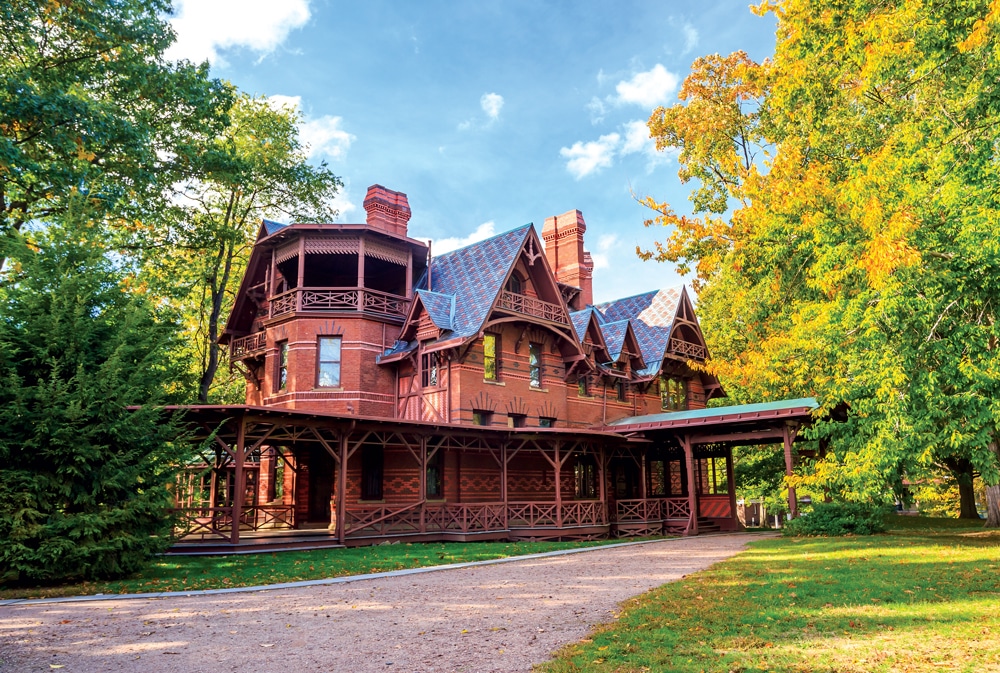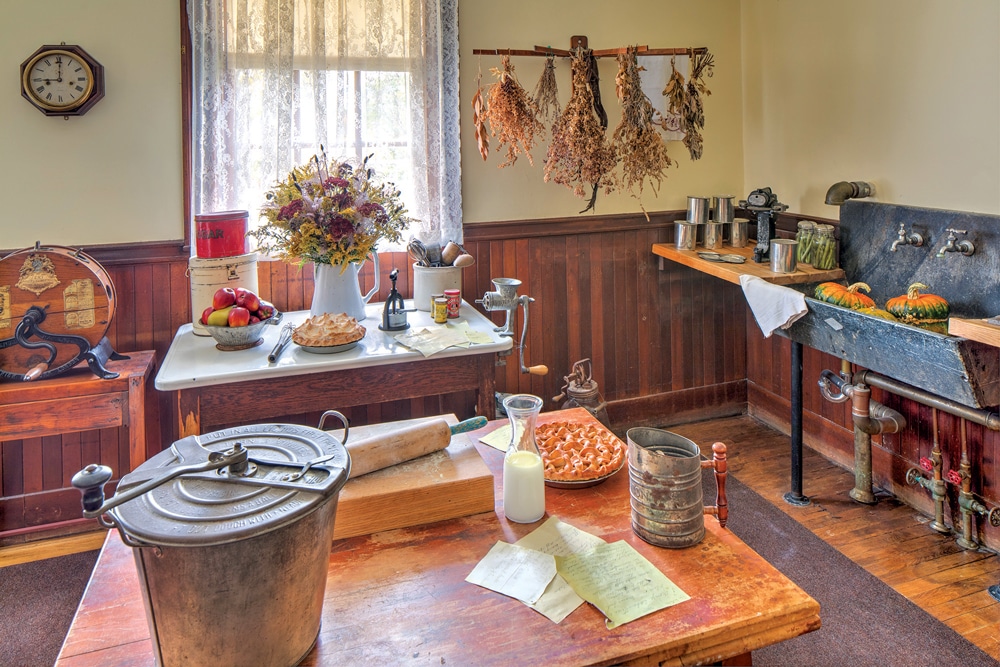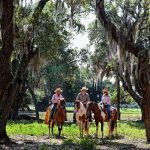16 New England Historic House Museums Worth Exploring
At these New England house museums, tours take you behind the scenes and into the past.

Coffee By Design | Portland, Maine
Photo Credit : Katherine KeenanIn contrast to museums whose treasures are carefully arrayed in plaque-filled exhibits and glass cases, historical houses invite us to stroll right into another era. We can tread the same halls and look out the same windows as the original owners, and imagine life as it was lived in past centuries. The lure of time-traveling is irresistible, especially when exploring properties that have been kept so intact it feels as though the owners have just stepped out. Even better? When we get a chance to take a peek into a house’s nooks and crannies and hear little-known tales from the past. The following are some of Yankee’s favorite places to take those kinds of historical deep dives.
16 New England Historic House Museums Worth Exploring
CONNECTICUT
Hill-stead Museum, Farmington. Theodate Pope Riddle, one of America’s first women architects, designed this distinguished Colonial Revival home as a country estate for her globe-trotting parents. At the turn of the 20th century, the Popes toured Europe annually, often purchasing Impressionist artworks from the likes of Degas, Monet, Manet, and Cassatt before they became famous. Still mounted over the fireplaces and on walls, these masterpieces feel as accessible to visitors as they were to the home’s original residents. For a true insider experience, check into Hill-Stead’s two-hour private tour: Offered on select Saturdays, it provides full access to the mansion’s nearly 20 historically intact rooms and is typically led by Hill-Stead’s curator or director of education. hillstead.org

Photo Credit : F11Photo/Shutterstock
The Mark Twain House & Museum, Hartford. Though we generally ascribe qualities of modesty and frugality to New England’s old houses, this magnificent 25-room Victorian High Gothic home speaks of Hartford’s heyday as a commercial powerhouse, while its exuberance expresses its famous owner’s larger-than-life personality. Filled with art and artifacts including Tiffany glass and many original furnishings, the house—which Time has dubbed “Downton Abbey’s American cousin”—displayed the latest in modern innovations when it was built in 1874. Docent-led tours take visitors through all three floors and offer a peek at everything from the library where Twain (aka Samuel Clemens) recited poetry, told stories, and read excerpts from his new works to his family and friends, to the modest room where the family’s butler often stayed when his duties kept him late. Note: Tours sell out well in advance, so book early online. marktwainhouse.org
Roseland Cottage, Woodstock. While there’s no missing this vibrant pink Gothic Revival beauty that welcomed four American presidents to its Fourth of July picnics (Ulysses S. Grant once bowled on the long lane out back), not all of the rich historical details of the c. 1846 dwelling are so easily seen. There are regular guided tours of the main living space—largely unchanged from the Victorian era and featuring beautiful wall coverings, carpets, and stained glass—but the home’s owner, Historic New England, is also known to arrange “behind the scenes” specialty tours that include rare looks at the attic, cellar, kitchen, and servants’ quarters, as well as outbuildings such as the icehouse and woodshed. Open seasonally; historicnewengland.org/property/roseland-cottage
MAINE
Castle Tucker, Wiscasset. Built in the Regency style in 1807, this gracious brick mansion was bought some 50 years later by shipping agent Captain Richard Tucker Jr. and redecorated and furnished to suit the tastes of the Victorian era. Preserved by three generations of Tucker women, Castle Tucker is little changed from how it looked in 1900; filled with actual family furnishings and decor, it is one of the most complete and original Victorian homes in the nation. In addition to regular tours during the normal operating season (Fridays, Saturdays, and Sundays from June to mid-October), the property reveals its secrets on occasional “Behind Closed Doors” tours, which provides access to rooms and connecting spaces otherwise not seen by the public. Open seasonally; historicnewengland.org/property/castle-tucker
Victoria Mansion, Portland. Facing demolition in 1940, this grand Italian Villa–style residence was saved from the fate of being remembered only in photographs by a retired educator, Dr. William Holmes, who fell under its spell, bought it, and led its transformation into a house museum. Now considered the country’s most magnificently ornamented dwelling of its period, it retains about 90 percent of its original Gustave Herter furnishings, which heightens the sense of stepping back into the Gilded Age in which the original owners lived. And these days, you can look even deeper into the lavish rooms than in years past, as the visitors’ areas have been enlarged to allow for greater social distancing. Guided tours are offered most days, but for the price of a museum membership (starting at $35 for individuals), you can also join in exclusive events throughout the year, including tours that venture into such areas as the third-floor rooms, the servants’ quarters, and even the tower. Open seasonally; victoriamansion.org
MASSACHUSETTS
Beauport, the Sleeper-McCann House, Gloucester. In a region rich in historic homes, this is a crown jewel: a 40-room summer residence designed and built by Henry Davis Sleeper, one of America’s first professional interior designers, in 1907–1908. He conceived of Beauport as a series of showrooms, each done in a different style, from early colonial to Arts and Crafts to chinoiserie. It’s like entering a life-size dollhouse, a portal to a more glamorous era (no wonder Isabella Stewart Gardner was a frequent guest). The McCann family, who bought the house shortly after Sleeper’s death in 1934, made few changes, leaving the property largely intact when it was acquired by Historic New England in 1942. Look for the specialty “Nooks and Crannies Tour,” an in-depth, three-hour exploration of Beauport right down to the closets and other spaces not usually open to the public, during which guides highlight their favorite objects and share stories about Sleeper, his friends, and staff. Open seasonally; historicnewengland.org/property/beauport-sleeper-mccann-house
Gibson House Museum, Boston. Home to three generations of one well-to-do family before becoming a museum in 1957, this gorgeously preserved 1859 row house in Boston’s historic Back Bay neighborhood was a bit of a hidden gem until its star turn in the 2019 film adaptation of Little Women. That brush with Hollywood inspired its popular specialty tour, “The World of Little Women at the Gibson House,” which treats visitors to stories of the movie’s filming and explores areas of the house not usually on view, including the fifth-floor servants’ quarters that stood in for Jo March’s boardinghouse bedroom. That said, even the standard tours of the Gibson House offer a don’t-miss time-capsule experience of life both upstairs and downstairs in the 19th and early 20th centuries. thegibsonhouse.org
Old House at Peacefield, Quincy. Few places connect the present to the past as seamlessly as Adams National Historical Park, whose 11 buildings include the birthplaces of America’s second and sixth presidents, John Adams and John Quincy Adams; the magnificent c. 1870 Stone Library, containing more than 14,000 antique volumes; and Old House at Peacefield. The last is the showstopper: A Georgian-style mansion whose 21 rooms speak to more than 140 years of Adams family history, it is filled with a stunning array of original furnishings, from John Adams’s favorite chair, to White House china from both Adams administrations, to the canopied bed in which former First Lady Abigail Adams died of typhoid fever in 1818. And while visitors may not be able to get up close with the precious artifacts, the sense of intimacy with history here is profound. Note: Closed in 2021, Old House at Peacefield is planned to reopen to the public this May. Adams houses are open seasonally; nps.gov/adam
The Old Manse, Concord. Don’t let the austere clapboard facade fool you: This c. 1770 two-story Georgian swirls with the drama of our nation’s early years. Perched near the Concord River, it overlooks the North Bridge, where the “shot heard ’round the world” was fired. The upstairs study is ground zero for another revolution, the Transcendentalist shift in thought, as Ralph Waldo Emerson wrote his landmark essay, “Nature,” here. Novelist Nathaniel Hawthorne and his new bride, Sophia, etched verses on windowpanes; Henry David Thoreau planted a vegetable garden. But another chapter in the Old Manse story was opened in 2008, when the Trustees of Reservations began leading tours into the building’s attic, giving visitors a rare look at the lives of those who dwelled there: older children of the household, students and ministers, servants, and enslaved people. thetrustees.org/place/the-old-manse
NEW HAMPSHIRE
Castle in the Clouds, Moultonborough. Built on a mountainside overlooking New Hampshire’s Lakes Region, the stunning Arts and Crafts–style former home of manufacturing tycoon Thomas Plant is an irresistible lure for architecture and history buffs. The Tiffany glass, the book-filled library, the big billiard table, the guest room Teddy Roosevelt slept in—it’s all still there, along with what just might be the finest views from any house in New Hampshire. To learn what lies beneath, though, pony up a little extra for the 45-minute “Basement Tour,” which covers the highlights of the Castle’s unique construction in 1914, the “ultra-modern” appliances and amenities of the time, and the lives of the servants who helped run and manage the estate in the 1910s and 1920s. Open seasonally; castleintheclouds.org
Kalil and Zimmerman Houses, Manchester. Getting inside the only two Frank Lloyd Wright houses in New England that are open to the public can take planning and patience, but it’s worth it. The buildings’ owner, the Currier Museum of Art, offers intimate, immersive small-group tours that let visitors explore these rare properties inside and out, with docents on hand to share historical insights and answer questions. Both the Kalil House and the Zimmerman House, built in the 1950s, boast original Wright-designed furnishings; further heightening the back-in-time feel at the Zimmerman House is the former owners’ personal collection of sculpture, pottery, and Japanese art. Note: Tours are offered April to December; reservations are required (and booking in advance is strongly recommended). currier.org/frank-lloyd-wright
RHODE ISLAND
Hearthside House, Lincoln. Stephen Hopkins Smith poured a $40,000 lottery windfall and four years of painstaking effort into constructing a fieldstone mansion worthy of the city girl who’d captured his heart. Alas, after the c. 1810 residence was completed, she took one look and pronounced its rural setting intolerable. But that wasn’t a problem for the 11 different owners who chose to make their home in Rhode Island’s “house that love built” over the next 180-plus years, and whose stories are told by tour guides in period costumes who lead visitors through all the rooms, which have been decorated to represent the owners’ different eras. Even the attic has treasure to reveal: centuries-old looms where weavers labored to produce hand-made textiles. Open seasonally; hearthsidehouse.org
Newport Mansions, Newport. Attracting more than a million visitors from around the world each year, Newport Mansions is the undisputed grand dame of New England’s house museums. Run by the Preservation Society of Newport County, this collection of 11 historic properties features legendary turn-of-the-century “summer cottages” of wealthy industrialists such as the Breakers, a sprawling 1895 mansion where the Vanderbilts entertained their company (think: 10-course dinners for 100 guests, with a footman behind each chair). While the Newport Mansions operating schedule and visiting options have varied during the pandemic, behind-the-scenes tours have traditionally included “Beneath the Breakers,” which leads visitors into the underground tunnel, boiler room, and basement at Newport’s most famous Gilded Age mansion; and “Servant Life at the Elms,” which travels from roof to basement in telling the stories of the men and women who worked at this grand estate. newportmansions.org
Rose Island Lighthouse, Newport. Situated in the middle of the East Passage of Narragansett Bay and boasting terrific views of the Newport Bridge, Rose Island is home to a wildlife refuge, historic military barracks, and a lighthouse that has kept watch over these waters since 1870. And it’s that lighthouse, restored to its appearance c. 1912, that promises a “house museum” experience like no other. Even for day visitors it’s a rare chance to step inside the lives of lightkeepers of old, as you wander the humble abode’s artifact-filled living room and vintage kitchen and climb up the lighthouse itself. The real magic lies in the overnight option, as the nonprofit that oversees Rose Island Light rents accommodations in the keeper’s house as well as in the Fort Hamilton barracks and the former foghorn engine building. Open seasonally; roseisland.org
VERMONT
Hildene, Manchester. The genteel 1905 summer home of Robert Todd Lincoln, son of Abraham and Mary Todd Lincoln, invites visitors to time-travel not just with their eyes but also their ears, thanks to the rare Aeolian player pipe organ in the entrance hall: A birthday gift from Robert to his wife, Mary Harlan Lincoln, its music still often fills the air of the family’s Georgian Revival mansion. The rest of the estate would likewise be immediately recognizable to the Lincolns today, as almost all of the furnishings are original; outside, the stunning formal garden designed by Robert and Mary’s daughter Jessie has been equally well preserved. Explore this magnificent home on a self-guided tour, or reserve a slot on an in-depth, lore-filled guided tour for a small extra fee. For an even more immersive experience, behind-the-scenes “Archives Tours” include spaces that aren’t open to the general public and showcase the work done by archive staff to keep this historic gem shining bright. Note: Archives Tour availability may depend on staffing and current Covid protocols. hildene.org

Photo Credit : Courtesy of Hildene, The Lincoln Family Home
Marsh-Billings-Rockefeller Mansion, Woodstock. Even as its 550 acres of woodland beauty beckon to nature lovers, Marsh-Billings-Rockefeller National Historical Park—the only national park in the U.S. devoted to conservation history—has something to delight architecture buffs as well. Over the course of nearly two centuries, this 1805 brick Victorian Queen Anne was home to each of the prominent families for which the park is named and still retains such exquisite details as Tiffany stained-glass windows and parquet wood floors, as well as a notable art collection. The mansion is open seasonally, and its tour lineup is subject to change; highlights have traditionally included “Hidden Spaces” tours, which venture into parts of the estate that are usually closed to the public (third-floor family bedrooms, the service wing, the Rockefellers’ bowling alley and soda fountain, etc.), and “Fallout Fridays,” in which visitors descend into a 1960s-era fallout shelter built by the Rockefellers. Open seasonally; nps.gov/mabi/planyourvisit/guidedtours.htm








How could you leave out the Fairbanks House in Dedham, MA? It is the oldest wooden frame house in the US, built in the 1600’s. It is an amazing look into the past and how the early colonists lived. You won’t get that sort of experience anywhere else!
Also surprised you left off the Fairbanks House! It’s amazing to see how the first generations lived. From 1637 to the early 1900s family members made their life in that house. And were safe there as well. Other members of the family settled in other towns and were burned out and murdered in uprisings, at least twice. The Dedham family were survivors in many ways! Not authors or presidents or famous in other ways, but they survived and so does the house.
For lovers of modern domestic architecture this hidden (literally) gem is not to be missed: https://www.frelinghuysen.org/
Woild have liked to,have seen photos of the other places mentioned, but nice article. Many many moons ago I went to a house if I recall correctly thay was the home of or studio of one of the Wyeth artists. That was a neat time too. Made for a good day trip excursion.
You omitted one crucial home in Connecticut; the precursor to the RI mansions by nearly a generation, that being the Lockwood Mathews Mansion Museum, in Norwalk. It’s an incredible gem that was saved literally at the 11th hour from implosion and so-called, town ‘renewal’ –thank God for that and for the fact that we are in abundance of historic properties of which we can squabble,”Pick me! Pick me!”
BEEN TO CASTLE IN THE CLOUDS, N.H. DON’T MISS IT.
Disappointed that the Leffingwell Inn in Norwich was left out. Going back 3 centuries, home to the Leffingwells, one of the founding families of Norwich, a stop and the Underground Railroad, and one of those places George Washington actually did sleep.
Visit Smith’s Castle, N.Kingstown, RI. 1678. A Plantation House, burned and rebuilt after the King Philip War.
Many old historic original buildings and museum in Old Deerfield MA
I am quite likely the only person alive today to have had dinner at Roseland. My cousin was houskeeper to the Holt sisters who lived in the home and one evening my family had dinner with Constance Holt. It was probably around 1946 and I was 8 or 9 years old.
Gillette’s Castle, in CT
Great list, but I think Naumkeag, Ventfort Hall and The Mount in Lenox, MA should be included.
Orleans Waterfront Inn, Orleans, Cape Cod, MA free tours May-October. Six story Victorian Sea Captain Mansion 1875 – 150th anniversary 2025 built by Captain Aaron Snow, descendant of Constant Hopkins, teenage passenger on the Mayflower. OrleansInn.com